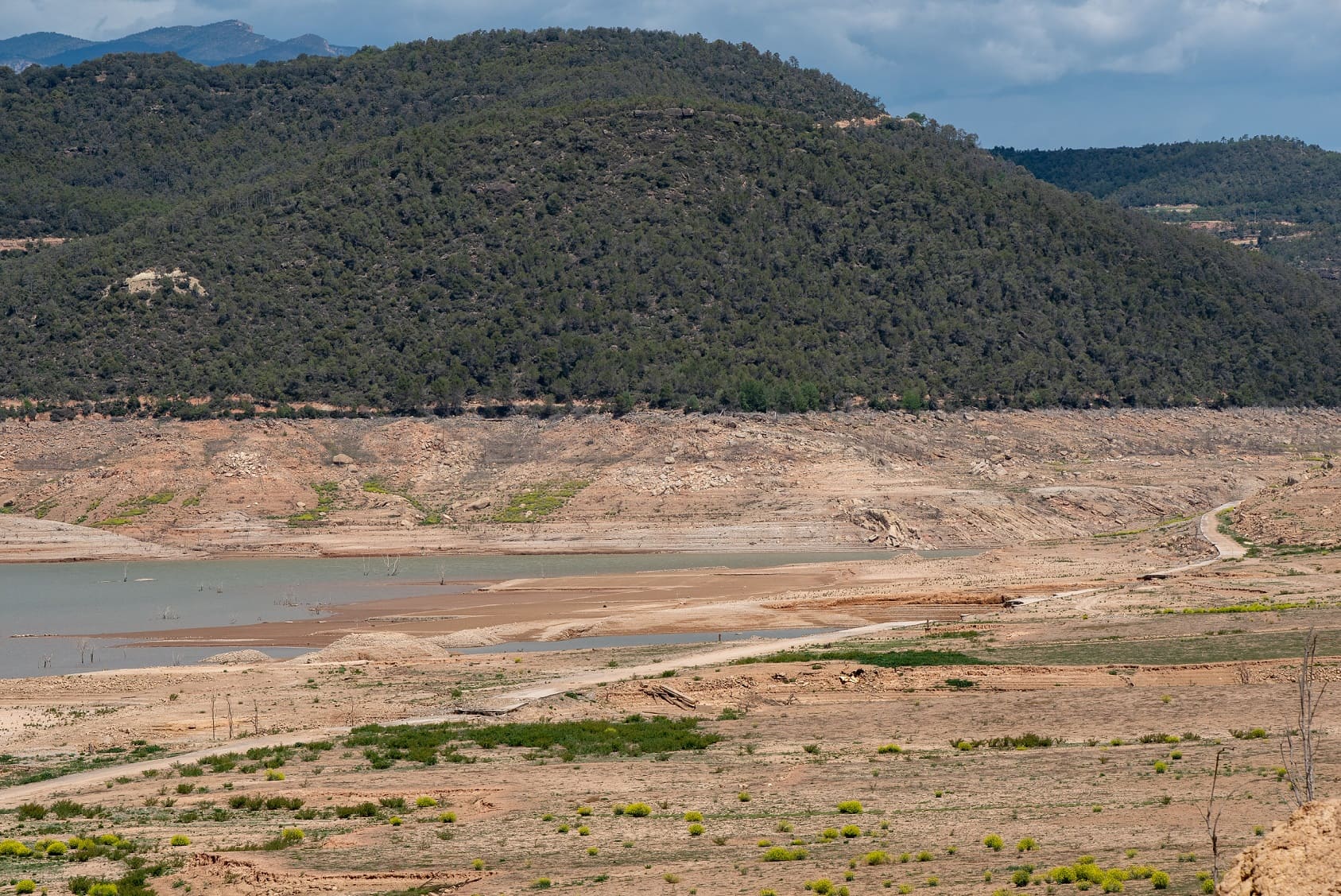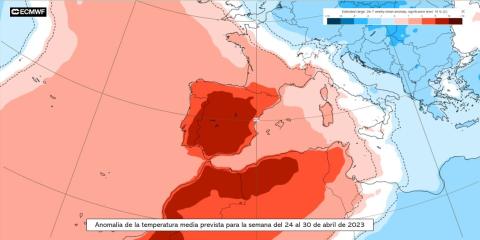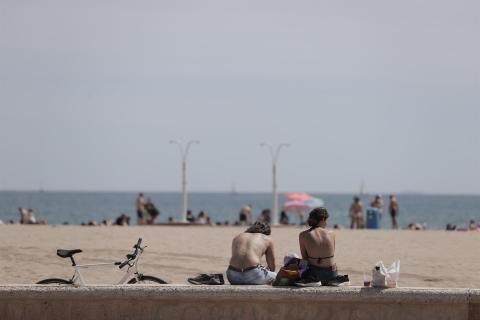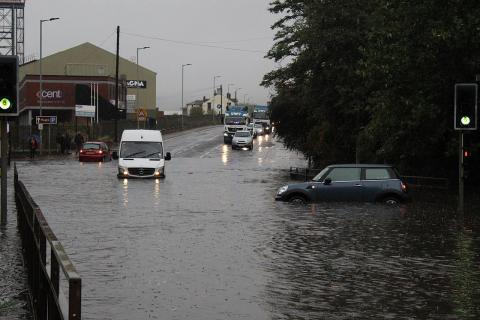"If we compare with previous drought periods, such as 1991-1995, we have not yet reached such a critical situation. Perhaps we are heading that way," said Sandra García Galiano, professor in the area of Hydraulic Engineering of the Department of Mining and Civil Engineering of the Polytechnic University of Cartagena (UPCT), in the briefing organized by the Science Media Centre Spain a few days ago. The session coincided with the meeting of the drought table convened on April 19 by the Ministry of Agriculture, Fisheries and Food.
For months, Spain has been experiencing a hydrological, meteorological and agricultural drought that has caused, in regions such as Catalonia, water use restrictions to be imposed in more than 200 municipalities where 6 million people live, when the situation was declared "exceptional" more than a month ago. Cities such as Seville have also announced similar actions if the situation does not improve.
However, the phenomenon varies by region. "There is diversity because of natural conditions, but also because of the infrastructures of the different basins. The critical level depends on where we are and the capacity to respond," said Annelies Broekman, a researcher with the CREAF Water and Global Change team at the Autonomous University of Barcelona.
Both researchers agreed that the rise in temperatures linked to climate change is aggravating the natural phenomenon of droughts. The year 2022 was the warmest and one of the driest of the historical series in Spain, which translates into the current level of reservoir reserves: on average in Spain, they are at 50.1% of their capacity, compared to the average of the last ten years of 67.95%.
In Spain, Portugal, Greece and Italy, we are chronically overexploiting our resources
Annelies Broekman
"In Spain, Portugal, Greece and Italy we are chronically overexploiting our resources, with a mismatch between demand and the available resource. When drought comes, our vulnerability skyrockets," explained Broekman, who is also a member of the Citizen Drought Observatory.
Differences between urban and agricultural consumption
As for the measures to be taken to deal with this situation, the experts recalled that Spain has special drought plans that define the actions to be taken according to the indicators recorded.
"Urban demand is the last to be touched because it is the one with the highest priority. It would have to be a very critical emergency situation to reach that point, of restrictions on drinking water," stressed Garcia Galiano, head of the Water Resources Management group of the UPCT.
"Drinking water is not in danger right now. It is rather a challenge for all economic uses that rely on water as a fundamental input for their productive process," Broekman reiterated.
Regarding the situation in the agricultural sector -COAG has reported that the lack of water already affects 60% of the countryside, with more than 3.5 million hectares damaged-, the researchers agreed that there is no single agriculture or water use in this sector.
"There is a need to define priorities within agriculture itself. We cannot 'punish' everything we call agricultural or agricultural activities. Within agricultural demand we should identify different levels of priority that today are not being identified," García Galiano stressed.
"It is very important not to confront sectors, to understand that the problem is very complex and specific in each place," said the CREAF researcher. "I advocate that there should be spaces for debate legitimized by the administrations so that cutback systems that benefit local populations can be agreed upon," she added.
There is a need to define priorities within agriculture itself. We cannot 'punish' everything that we call agricultural or farming activities
Sandra García Galiano
In the opinion of the UPCT researcher, abandoning irrigated crops to transform them into rainfed is not a solution, nor to do it the other way around, since the forecasts of the Sixth IPCC Report, if greenhouse gas emissions do not decrease, point to a further decrease in rainfall, which will favor a greater frequency and severity of droughts.
"It's hard to say and it's hard to accept that maybe this is leading us to a reconversion of the economic system," he said. Along those lines, Broekman put on the table the reconversion of other sectors, such as tourism. "Now in Barcelona we are waiting for the hordes of tourists. How are they going to shower? We don't know. There is often talk of agriculture suffering. We all suffer," he stressed, and bet on science as part of the solution. "This complexity needs to be addressed with science-based methodologies," he said.
Without a European Drought Directive
Other countries such as France and North Africa are also experiencing a complicated situation due to the lack of rainfall. García Galiano called for a European Drought Directive which, to date, does not exist.
"It could be very important in this situation, since we are heading towards a water emergency at national level, that the central government puts some pressure on the authorities at European level so that this directive can be approved," the expert said.
In this sense, no consensus has been reached on what drought is, what indicators should be used to evaluate the different situations in the member countries, nor has a line of financing for aid in situations of water emergencies been defined, the researcher pointed out.
As to whether the quality of tap water could worsen if water resources decrease further, Broekman categorically denied this. "We are not going to have to get used to unsafe tap water and we are not going to have problems of this kind because the Drinking Water Directive says what kind of quality water can have to go into the tap. We have to encourage people to trust the water that comes out of the tap. It is very controlled and the standards are very high," he recalled.
We have to encourage people to trust the water that comes out of the tap. It is very controlled and the standards are very high
Annelies Broekman
However, if the bodies of water from which the water for human consumption comes are not in the best conditions, it will be more costly, both economically and energetically, to make it drinkable, according to the CREAF expert. Before investing in technology, "restoring bodies of water should be the first priority," she said.
In García Galiano's opinion, incorporating technologies to optimize water use is also important, such as, for example, reducing losses in pipes or with smart meters in showers. "We have a positive impact on water bodies because we will have more available water bodies," he said.
Uninspiring forecasts
How long will this situation last? AEMET forecasts are not at all flattering: the May-June-July quarter has a higher probability of being warmer than normal and, although it is not clear what will happen with precipitation, it does not seem likely, unless May is very rainy, that we will get out of the meteorological drought this spring.
"This is not solved by one big rainfall. We're talking about averages, large periods, not one-off events. To recover from a normal, Mediterranean, four-year drought, we need two years with a higher than normal hydrologic mean," Broekman stressed.
"Since the start of the water year [cumulative average rainfall] has risen 21% less than normal, 334 liters per square meter compared to 425. Would 20% more rain solve the problem? We have to talk about reservoir recovery, and reservoirs do not recover in a month. Any precipitation would help, obviously," added the UPCT researcher.
Would 20% more rain solve the problem? There is talk of reservoir recovery and they do not recover in a month
Sandra García Galiano
As for the role of water transfers when water is scarce, both researchers agreed that they are not the solution, especially in times of drought, since this is an event that can affect the entire Iberian Peninsula. In García Galiano's opinion, other alternatives such as desalination should be considered if costs are lowered and renewable energies are introduced into the process.
"Water transfers are engineering from the last century," Broekman pointed out. "They generate conflicts, both basins suffer drought and they have an energy cost, 30% higher than desalination," he calculated. In his opinion, neither would it be a solution to build new reservoirs trusting that they will have water when it is not known if this will be the case due to the uncertainty of climate change. "Our natural reservoirs are the aquifers," he said, and advocated better management and a change in their uses.




